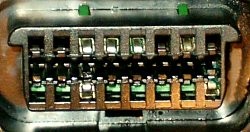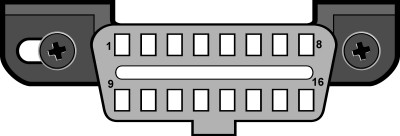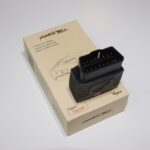Is your check engine light on? Are you experiencing performance issues with your car? You might need an OBD2 scanner to diagnose the problem. But how can you tell if your car is compatible with an OBD2 scanner? This guide will walk you through everything you need to know to determine if your vehicle uses the OBD2 standard.
Determining OBD2 Compatibility: It’s All About Where and When
OBD2 (On-Board Diagnostics II) is a standardized system that allows external devices, like scanners, to access your car’s diagnostic trouble codes (DTCs). Crucially, compatibility depends on where your car was sold new, not where it was manufactured.
The easiest way to check is by using our handy OBD2 compatibility chart:
| Country of Sale | Model Years | Notes |
|---|---|---|
| United States | 1996+ | All cars and light trucks |
| European Union (Diesel) | 2007+ | Full compliance; Limited 2004-06 |
| European Union (Petrol) | 2002+ | Full compliance; Limited 2001 |
| Canada | 1998+ | All cars and light trucks |
| … | … | … |


(Note: This is a shortened version of the full table. Refer to the complete chart on our website for all countries and specific details.)
Important Considerations:
- Hybrid and Electric Vehicles: OBD2 scanners may not work on all hybrid or electric vehicles. Consult your owner’s manual for compatibility information.
Understanding OBD2 Regulations by Region
Different regions adopted OBD2 at different times:
-
United States: All cars and light trucks sold in the US from 1996 onwards are OBD2 compliant, mandated by the EPA (Environmental Protection Agency).
-
European Union: Gasoline vehicles sold from 2001 onwards (full compliance from 2002) and diesel vehicles from 2004 onwards (full compliance from 2007) generally adhere to EOBD (European On-Board Diagnostics), which is largely compatible with OBD2 scanners.
-
Other Countries: Refer to the comprehensive compatibility chart for specific regulations in countries outside the US and EU.
Fig. 1 – Example of a DLC connector (Ford Escort, courtesy of DigitalFriction, UK)
What if My Car Isn’t Listed?
If your car isn’t listed in the chart, look under the hood for an emissions sticker. This label often explicitly states if the vehicle is OBD2 compliant (or compliant with a similar standard like EOBD or JOBD).
Fig. 2 – Standardized J1962 OBD2 Connector Type A
The 16-Pin Connector Myth
Just because your car has a 16-pin connector doesn’t automatically mean it’s OBD2 compliant. Some manufacturers used similar connectors before OBD2 became standard. However, the shape of the connector itself can offer clues. Non-OBD2 compliant connectors may have slight variations, such as extra “ears” or a different overall shape. Compare Figure 1 (a non-compliant connector) with Figure 2 (a standard OBD2 connector).
Still Unsure? Consult Your Resources
If you’re still uncertain, consult your owner’s manual or contact your dealership. Keep in mind that not all dealerships are experts on OBD2, so you may need to do further research.
Conclusion: Finding the Right OBD2 Scanner
Determining if your car uses an OBD2 scanner is crucial for diagnosing car problems. By checking the compatibility chart, understanding regional regulations, and inspecting your vehicle, you can confidently find the right diagnostic tool. Remember to choose a reputable OBD2 scanner from a trusted source like obd2reader.store for accurate and reliable results.

